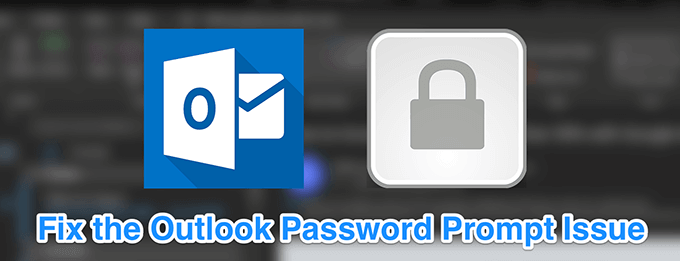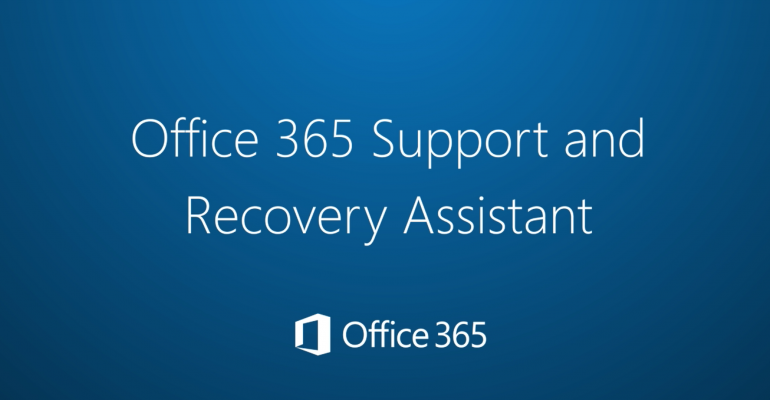Outlook Keeps Asking for Password (Office 365) Outlook is the most widely used email client worldwide and definitely one of the most convenient email clients. However this convenience does not come without some issues here and there. Hi, We are using E3, outlook 365 in our company. Some of our users' outlook stop sync with exchange and ask for password, as shown in below image: to fix the issue, I clear entries in Credential Manager, Delete Temporary Files, unchecked 'Use Cached Exchange mode', restart system and check th. Select the login keychain entry in the top left navigator pane, then from the File menu, choose Lock Keychain 'login'. Launch any Office app, such as Word. You'll receive a prompt requesting permissions to access the keychain. Enter your Mac admin account password and click OK. Open Outlook for Mac. Enter your password in the prompt, and complete 2-factor authentication if asked. If Outlook still won't accept your password, create a new macOS user, and try to use Outlook with that profile instead. Change or reset the password of a macOS user account; Release notes for Office 2016 for Mac. Dec 21, 2020 Click on 'Control Panel' and 'Credentials Manager' Scroll to 'User accounts' and from there, select 'Credential Manager' Go to the section 'Windows Credentials' and 'Generic Credentials' and if there are any stored credentials that references Office 365 or ms.outlook email addresses, remove it Select 'Details' 'Remove from vault'.
If your Mac is connected to the Internet but suddenly starts asking for your password, you should generally try again later and if necessary work with your email provider to resolve. If you're using Apple's iCloud Mail, find out how to resolve issues with iCloud Mail.
Why is Mail asking for your password?
Mail asks for your password when it is connecting to your email provider, but can't connect to your email account because your email provider isn't accepting your email password.
Your email provider may reject your password for several reasons, including:
- You're not using your current email password. If you updated the password on another device, make sure you're using the same password on your Mac.
- Your email provider needs you to update or reset your password for security reasons. For example, if you're using Google’s two-step verification, your Gmail account in Mail requires the appropriate app-specific password.
- Your email provider deactivated or suspended your account. Contact your email provider for help.
Check your password in Internet Accounts preferences
Depending on the type of email account you're using, you might be able to correct the password as follows:
- Quit Mail. If it doesn't quit, you can force it to quit.
- Choose Apple menu > System Preferences, then click Internet Accounts.
- Select your mail account in the sidebar.
- If you see a password field for your account, delete the password and type the correct password.
- Close System Preferences, then open Mail and try using your account again.

If Mail still asks for your password, the password is probably incorrect. Your email provider can help you verify your email settings and make sure you're using the correct password.
Test using webmail
Many email providers offer webmail, which is a way to use email with a web browser such as Safari, instead of with an email app such as Mail. For example, if you're using an iCloud Mail account, you can use iCloud.com to send and receive emails.
Because the password you use with Mail is usually the same password you use with webmail, try signing in to webmail with that password. If it doesn't work there either, your password is probably incorrect. Your email provider can help you verify your email settings and make sure you're using the correct password for the Mail app.

Remove your account, then add it back
If no other solutions work, try setting up your email account again. To do that, first remove your email account, then add the account back.
Learn more
- If you're using Apple's iCloud Mail, find out how to resolve issues with iCloud Mail. The password you use with iCloud Mail is your Apple ID password. Find out what to do if you forget your Apple ID password or want to change your Apple ID password.
- If you forget or want to change the email password for a different email service, contact the email provider or request a password reset from their website.
Symptoms
When you try to create an Outlook profile or connect to a Microsoft Office 365 mailbox, you're continually prompted for credentials while the client displays a 'trying to connect...' message. If you cancel the credentials prompt, you receive the following error message:
The connection to Microsoft Exchange is unavailable. Outlook must be online or connected to complete this action.
Cause
This issue can occur if the Logon network security setting on the Security tab of the Microsoft Exchange dialog box is set to a value other than Anonymous Authentication.
Resolution
Note
Microsoft Outlook 2016 and some recent builds of Outlook 2013 are not affected by this issue. Those versions have been updated to prevent the problem that is described in the 'Symptoms' section. These versions have the Logon network security setting disabled or removed from the Microsoft Exchange email account settings.
For newer versions of Outlook

You may be an Office 365 customer who is experiencing the error that is described in the 'Symptoms' section when you try to connect to an Exchange Online mailbox. You may also already be running newer versions of Outlook 2013 or Outlook 2016. If both conditions are true,it is highly recommended that you use the Outlook keeps asking for my password diagnostic to troubleshoot issues in which Outlook continually prompts for a password.
This diagnostic does automated checks and returns possible solutions for you to use to try to fix any detected issues.
Outlook 365 Email Keeps Asking For Password Mac Email
If you are connecting to an Exchange On-Premises mailbox, see the following articles for additional troubleshooting:
Additionally, you can view the following forum thread for common causes:
For affected versions of Outlook
If you have an older version of Outlook, change the Logon network security setting to Anonymous Authentication to fix this issue. To do this, follow these steps:
Exit Outlook.
Open Control Panel, and then do one of the following:
- In Windows 10, Windows 8.1, or Windows 7, click Start, type control panel in the search box, and then press Enter.
- In Windows 8, swipe in from the right side to open the charms, tap or click Search, and then type control panel in the search box. Or, type control panel at the Start screen, and then tap or click Control Panel in the search results.
In Control Panel, locate and double-click Mail.
Click Show Profiles, select your Outlook profile, and then click Properties.
Click E-mail Accounts.
Select your email account, and then click Change.
In the Change Account dialog box, click More Settings.
In the Microsoft Exchange dialog box, select the Security tab.
On the Logon network security list, select Anonymous Authentication, and then click OK.
Click Next, click Finish, and then click Close on the Account Settings dialog box.
Click Close on the Mail Setup dialog box, and then click OK to close the Mail control panel.
More Information
Outlook Email Keeps Asking For Password On Mac
To locate and view the registry setting for Anonymous Authentication in the Outlook profile, follow these steps.

Important
Modifying the Outlook profile by using the 'Profiles' registry path is not supported and may cause your Outlook profile to be in an unsupported state. Follow the steps in this section carefully. Serious problems might occur if you modify the registry incorrectly. Before you access it, back up the registry for restoration in case problems occur.
Open the Registry Editor.
- In Windows 10, Windows 8.1, or Windows 8, press the Windows logo key+R to open the Run dialog box, type regedit.exe, and then click OK.
- In Windows 7, click Start, type regedit in the Start Search box, and then press Enter. If you're prompted for an administrator password or for confirmation, type the password, or click Allow.
Locate the registry path appropriate for your version of Outlook:
For Outlook 2013
HKEY_CURRENT_USERSoftwareMicrosoftOffice15.0OutlookProfiles
For Outlook 2010 and 2007
HKEY_CURRENT_USERSoftwareMicrosoftWindows NTCurrentVersionWindows Messaging SubsystemProfiles
Under this subkey, locate and expand the name of your Outlook profile.
Under the profile, locate and expand the 9375CFF0413111d3B88A00104B2A6676 key.
Under the 9375CFF0413111d3B88A00104B2A6676 key, you see a subkey for each account in your profile. Select the first subfolder (00000001), and then examine the data of the Account Name binary value by double-clicking the value. Repeat this process until you find the Account Name value that includes your SMTP address. For example, the Account Name value points to guidopica@contoso.com under the 00000003 subkey.
Under the 0000000x subkey, locate the Service UID binary value. It represents a GUID (for example, c3 d1 9a 7b 80 1b c4 4a 96 0a e5 b6 3b f9 7c 7e).
Locate the subfolder in your profile that matches the GUID value identified in step 6 (for example, c3d19a7b801bc44a960ae5b63bf97c7e).
Under the subfolder that you found in step 7, examine the 01023d0d binary value. It represents a GUID (for example, 5f cf d5 f1 ba 5c 6f 45 b3 57 cc 5e 0d 16 94 58).
Locate the subfolder in your profile that matches the GUID value identified in step 8 (for example, 5fcfd5f1ba5c6f45b357cc5e0d169458).
Under the subkey found in step 9, examine the value of the 00036619 binary value. This value determines whether Outlook is using Anonymous Authentication.
Binary: 00036619
Data: 01 f0 00 80Anonymous Authentication
Any other value represents an authentication method other than Anonymous.